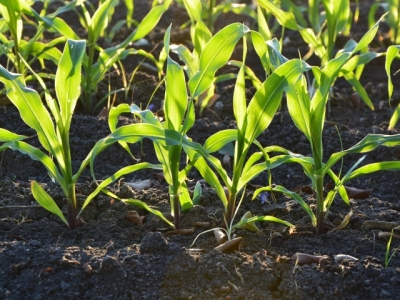Phospholipid pathway in plants, parasites may aid hardier crops

Choline metabolism in cells of plants and some parasites may lead to new therapies for parasitic infections and hardier crops.
Recent findings by researchers at Washington University in St. Louis, Mo., may aid in the development of therapies to treat parasitic infections, including malaria, and may help plant scientists one day produce hardier crops.
The research team's work was published in the Dec. 29 issue of the Journal of Biological Chemistry.
Choline is an essential nutrient people get from certain foods like eggs, meat, leafy greens and nuts. The human body converts choline into phosphocholine (pCho), which it then converts into — among other essential building blocks — phosphatidylcholine (PtdCho), a component of cell membranes. Plants can't acquire the nutrient from the environment, however, so they must synthesize pCho from scratch.
The biochemical pathway plants use to synthesize pCho is also found in nematodes and the malaria parasite Plasmodium.
In plants, the enzymatic reaction that produces pCho is essential for both normal function and for responding to stresses, the researchers said. Plant pCho is converted into PtdCho, which builds membranes that can adjust their rigidity in response to temperature changes. Plant pCho also gets converted into molecules that help the plant survive high salt. The enzymes that produce plant pCho are called called phosphoethanolamine methyltransferases (PMTs).
Soon Goo Lee, a postdoctoral research fellow at Washington University in the laboratory of Joseph Jez, has been interested in PMTs in both plants and parasites for many years.
"Understanding the PMT enzyme is key to engineer plants with improved stress tolerance and enhanced nutrients," Lee said. Furthermore, since the PMT-catalyzed pathway is found in parasites but not people, Lee and Jez's team is looking for inhibitors of this enzyme to treat diseases caused by these parasites.
The new research report explains how PMTs of the model plant Arabidopsis thaliana share core features of parasite PMTs, with an almost identical structure at the active site. However, the plant PMTs are roughly twice as large as the parasite ones, with large sections that can rearrange themselves to carry out multiple chemical reactions.
Furthermore, the three PMT types found in the plant — which were thought to carry out the same function — actually appear to play different roles depending on where they are found in the plant. Plant growth experiments showed that one type of PMT was essential for root development and salt tolerance, whereas the other two had no effect on roots and instead seemed to be found primarily in leaves.
In the long run, this big-picture view of PMTs in different organisms offers routes to precisely engineer enzymes with different functions.
"I love these kinds of stories, where I can look from the atomic (structure) to the physiological level to explain why these enzymes have different forms and how they work," Lee said.
Related news
 Aquaponics at Home: A Modern Farmer Review of Turnkey Aquaponics Systems for All Levels
Aquaponics at Home: A Modern Farmer Review of Turnkey Aquaponics Systems for All Levels Aquaponics an environmentally-friendly mash-up of aquaculture and hydroponics is just beginning to take off at a commercial level
 How To Turn Your Backyard into a Four-Season Farm
How To Turn Your Backyard into a Four-Season Farm The Vegetable Farm Manager at Stone Barns Center for Food and Agriculture, turning your garden into a four-season farm is easier than you think.
 How To Build a Worm Farm
How To Build a Worm Farm It improves soil structure, increases yield and even improves the taste of fruits and vegetables, and makes them last longer in the field.